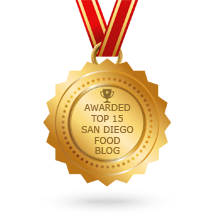Bencotto and Monello Pastas Go Organic
Okay, let's just establish that whatever I say about the new, improved house-made pasta at Little Italy's Bencotto and Monello, the pasta dishes they've been serving all these years have been superb. But even superb can be improved--and this is something that owners Guido Nestri and Valentina Di Pietro and executive chef and co-founder Fabrizio Cavallini have been mulling for awhile.
The decision to go organic with the semolina flour they use to make their pasta entailed several variables. Cost was one. The difference in price between the flour they were using and what they wanted to use was the difference between $40 and $75 per 25 kilo bag--almost double. And even if the cost proved to be worth it, there was the question of reliable delivery at the quantities they need. And even if those two factors could be addressed, the reality is that organic wheat flour of the quality they were considering is very difficult to work with. "Durum" means hard after all--and softer, cheaper flour is so much easier to form into pasta.
Between the two restaurants, Fabrizio's kitchen produces 120,000 portions of pasta a year, so this was a pretty significant decision. In their pasta lab on Bencotto's second floor, he and his crew began experimenting with different wheats and recipes to perfect this new pasta and once happy with the results, began quietly serving the new pasta to customers, as well as new organic dried pasta from Italy. Eventually they found a reliable flour distributor and the change over was on. And, no, the menu prices haven't changed.
With their production perfected, the restaurants just officially announced the switch over and I stopped in to both try the pasta and have Fabrizio teach me how he makes it.
 |
| Non-organic pasta (l) and new organic pasta (r) |
And I also must mention that Fabrizio is now using organic, cage-free eggs in the pasta. He maintains that this higher quality egg makes a difference in the final product, creating a silkier, more pliable pasta that better absorbs sauce.
Well, does it?
Guido and I sat at Bencotto's bar as Fabrizio brought out pastas. First we attacked a plate of plain, naked tagliatelli. Even visually it was pretty easy to see the difference. On the left is the old school pasta. It was very good, but suffered somewhat by comparison after tasting the pasta on the right, feeling rather thick and chewy compared with the organic tagliatelli. That pasta was softer and lighter--more delicate, although it still had a bite.
We moved on to add olive oil and the flavor was rapturous, clinging to the pasta, adding herbaceous notes and making the pasta silky.
We did the same with the fusilli, although Fabrizio only gave us the new, organic version. I shouldn't have, but pretty much cleaned the plate.
Then Fabrizio came out with the tagliatelli bathed in a splendid, rich lamb sauce. There's no question that the organic pasta melded beautifully with the sauce. In any case, we demolished both versions. Like I said, the previous version was really good. It's just that this new organic version is sublime.
So, how do you make this pasta? Fabrizio showed me in about 15 minutes. And, he told me that home cooks can purchase organic semolina as well as 00 flour at Mona Lisa, down the street.
Here's how he does it:
Hand-made Italian Pasta
Fabrizio Cavallini
(printable recipe)
Serves 8
Ingredients
2 1/2 pounds extra fancy semolina
1/2 pound 00 flour
12 large eggs
Combine the two flours and make a large well.
Break the eggs into the center of the well.
Use a fork or your fingers (Fabriazio uses a fork, like his mom and grandmother) to mix together the eggs and flour, gradually pulling in flour from the inside edge of the well.
Once the eggs and flour have been mixed, pull the mixture together to start kneading.
Knead the dough for about 10 minutes. It will become smooth and elastic.
Shape the dough into a ball and cover with olive oil. Then wrap the ball in plastic wrap and let it rest at least half an hour. Fabrizio suggests letting it sit overnight in the refrigerator for better pasta.
Then shape and cut into the pasta of your choice.
Bencotto and Monello are located at 750 Fir St. in Little Italy.
Print Page



























































